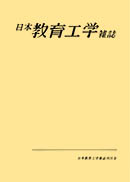Volume 16, Issue 1
Displaying 1-13 of 13 articles from this issue
- |<
- <
- 1
- >
- >|
-
Article type: Cover
1992 Volume 16 Issue 1 Pages Cover1-
Published: June 10, 1992
Released on J-STAGE: October 20, 2017
Download PDF (23K) -
Article type: Cover
1992 Volume 16 Issue 1 Pages Cover2-
Published: June 10, 1992
Released on J-STAGE: October 20, 2017
Download PDF (23K) -
Article type: Appendix
1992 Volume 16 Issue 1 Pages App1-
Published: June 10, 1992
Released on J-STAGE: October 20, 2017
Download PDF (94K) -
Article type: Appendix
1992 Volume 16 Issue 1 Pages App2-
Published: June 10, 1992
Released on J-STAGE: October 20, 2017
Download PDF (94K) -
Article type: Article
1992 Volume 16 Issue 1 Pages 1-12
Published: June 10, 1992
Released on J-STAGE: October 20, 2017
Download PDF (1344K) -
Article type: Article
1992 Volume 16 Issue 1 Pages 23-39
Published: June 10, 1992
Released on J-STAGE: October 20, 2017
Download PDF (1697K) -
Article type: Article
1992 Volume 16 Issue 1 Pages 41-53
Published: June 10, 1992
Released on J-STAGE: October 20, 2017
Download PDF (1533K) -
Article type: Appendix
1992 Volume 16 Issue 1 Pages App3-
Published: June 10, 1992
Released on J-STAGE: October 20, 2017
Download PDF (30K) -
Article type: Appendix
1992 Volume 16 Issue 1 Pages App4-
Published: June 10, 1992
Released on J-STAGE: October 20, 2017
Download PDF (30K) -
Article type: Appendix
1992 Volume 16 Issue 1 Pages App5-
Published: June 10, 1992
Released on J-STAGE: October 20, 2017
Download PDF (120K) -
Article type: Appendix
1992 Volume 16 Issue 1 Pages App6-
Published: June 10, 1992
Released on J-STAGE: October 20, 2017
Download PDF (120K) -
Article type: Cover
1992 Volume 16 Issue 1 Pages Cover3-
Published: June 10, 1992
Released on J-STAGE: October 20, 2017
Download PDF (26K) -
Article type: Cover
1992 Volume 16 Issue 1 Pages Cover4-
Published: June 10, 1992
Released on J-STAGE: October 20, 2017
Download PDF (26K)
- |<
- <
- 1
- >
- >|
